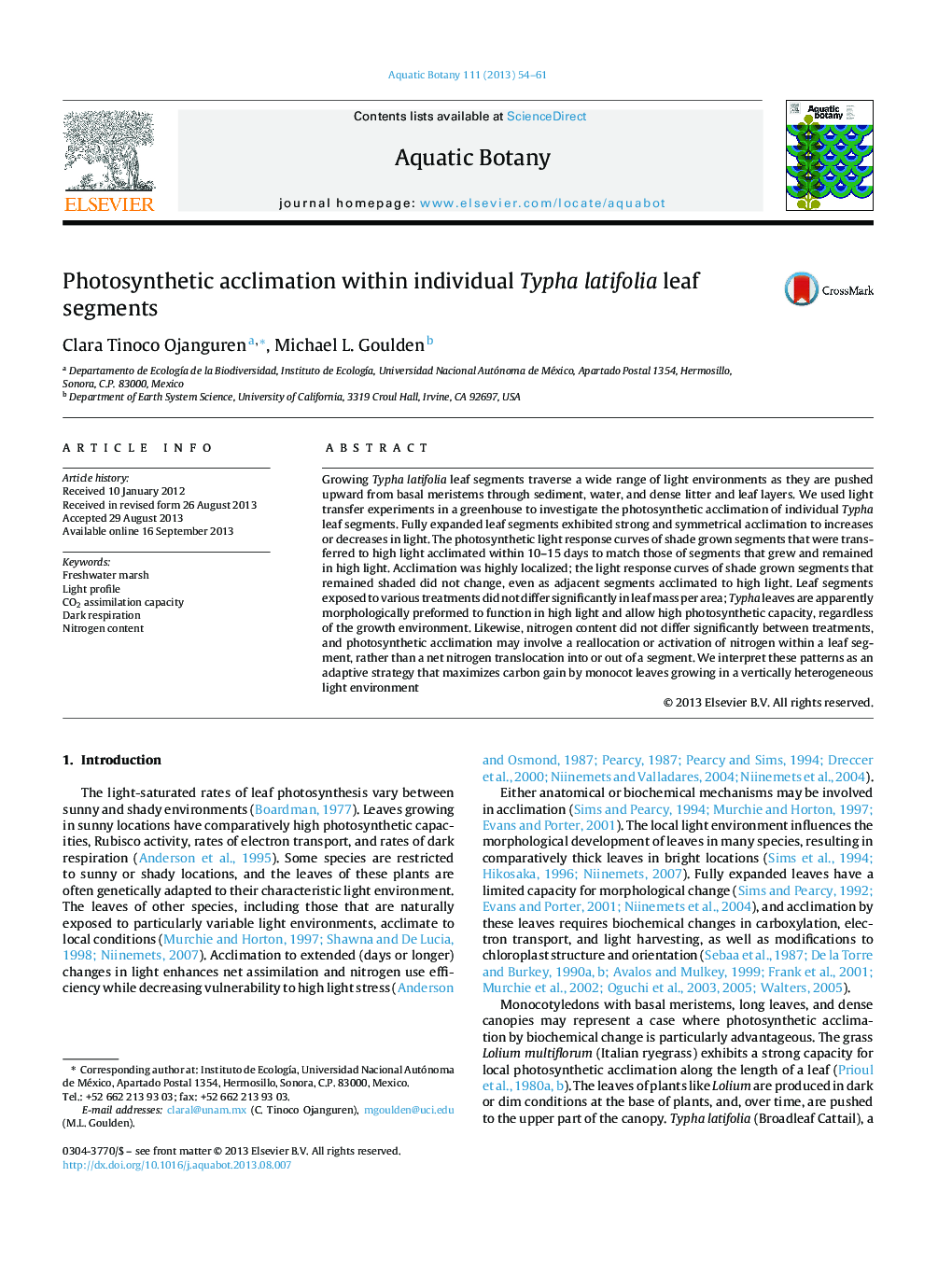| Article ID | Journal | Published Year | Pages | File Type |
|---|---|---|---|---|
| 4527846 | Aquatic Botany | 2013 | 8 Pages |
•Typha latifolia mature leaf segments exhibited strong and symmetrical photosynthetic acclimation to increases or decreases in light.•Acclimation was highly localized and even adjacent segments acclimated to contrasting light.•Leaf segments exposed to various light treatments differ in gas exchange parameters but did not differ in leaf mass per area or nitrogen content.•T. latifolia leaves are apparently morphologically preformed to function in high light and allow high photosynthetic capacity (Amax), regardless of the growth environment.
Growing Typha latifolia leaf segments traverse a wide range of light environments as they are pushed upward from basal meristems through sediment, water, and dense litter and leaf layers. We used light transfer experiments in a greenhouse to investigate the photosynthetic acclimation of individual Typha leaf segments. Fully expanded leaf segments exhibited strong and symmetrical acclimation to increases or decreases in light. The photosynthetic light response curves of shade grown segments that were transferred to high light acclimated within 10–15 days to match those of segments that grew and remained in high light. Acclimation was highly localized; the light response curves of shade grown segments that remained shaded did not change, even as adjacent segments acclimated to high light. Leaf segments exposed to various treatments did not differ significantly in leaf mass per area; Typha leaves are apparently morphologically preformed to function in high light and allow high photosynthetic capacity, regardless of the growth environment. Likewise, nitrogen content did not differ significantly between treatments, and photosynthetic acclimation may involve a reallocation or activation of nitrogen within a leaf segment, rather than a net nitrogen translocation into or out of a segment. We interpret these patterns as an adaptive strategy that maximizes carbon gain by monocot leaves growing in a vertically heterogeneous light environment
